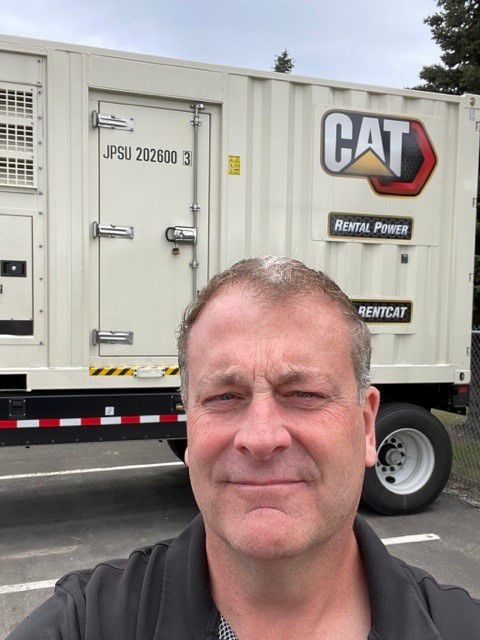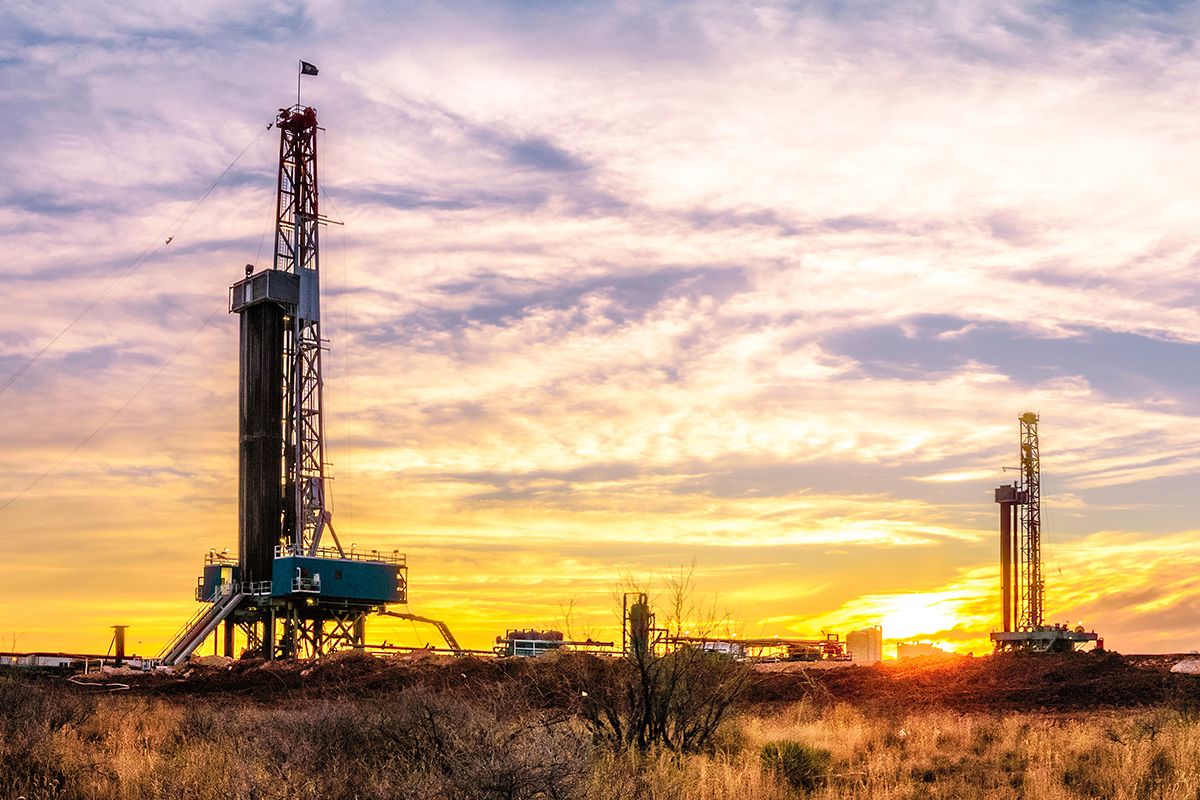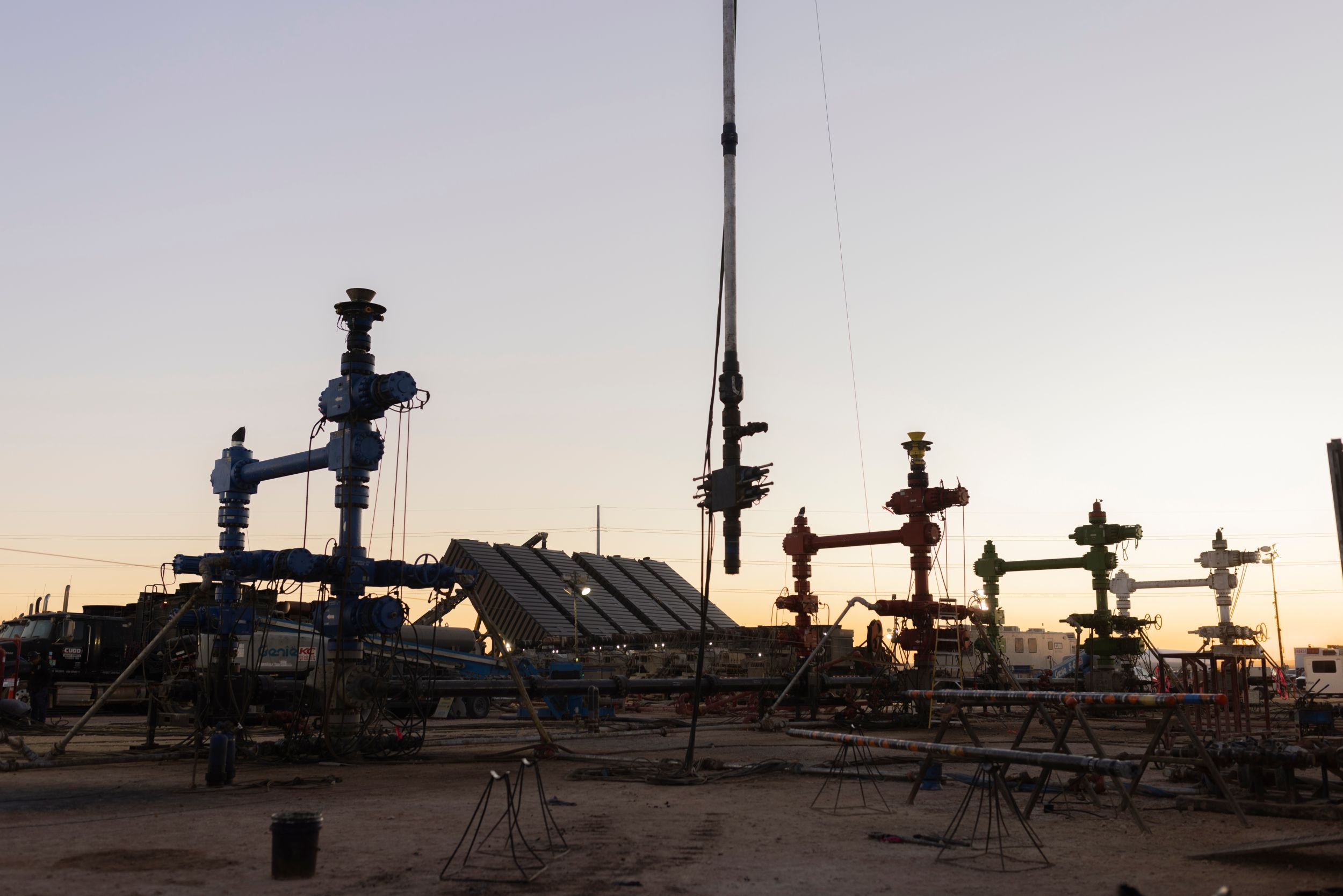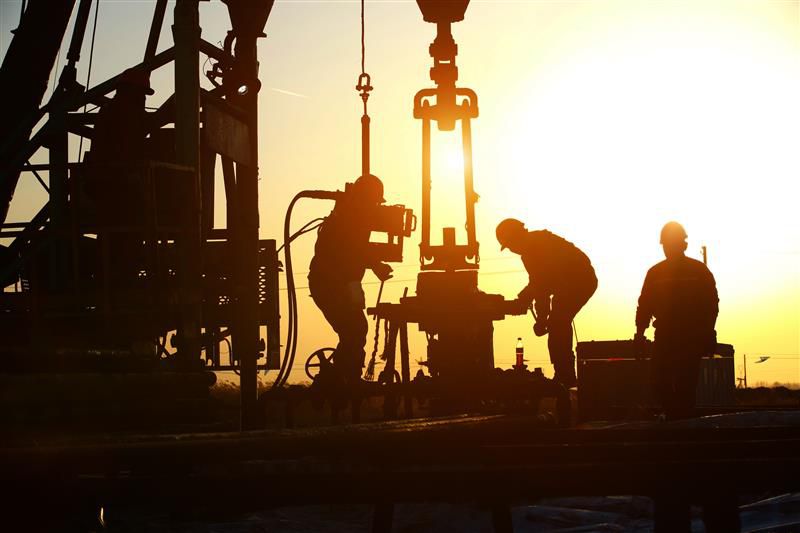Read the full episode transcript
00:00:00 Jordan Yates
This episode of The Energy Pipeline is sponsored by Caterpillar Oil and Gas. Since the 1930s, Caterpillar's manufactured engines for drilling, production, well service and gas compression. With more than 2100 dealer locations worldwide, Caterpillar offers customers a dedicated support team to assist with their premier power solutions.
00:00:26 Speaker 2
The Energy Pipeline is your lifeline to all things oil and gas, to drill down deep into the issues impacting our industry, from the frack site, to the future of sustainability, hear more about industry issues, tools, and resources to streamline and modernize the future of oil and gas. Welcome to The Energy Pipeline.
00:00:47 Jordan Yates
Hey everybody. Welcome back to another episode of The Energy Pipeline. It's me, your host, Jordan Yates, and today I'm joined with Erick Pomrenke. Erick has a very interesting background, all the way up in Alaska. And I don't want to tell it, Erick, I want you to get into it. Why is your background so interesting? Our episode is called From Gold Mines to Power Lines. Can you elaborate what we're talking about?
00:01:21 Erick Pomrenke
Oh, I guess, yeah. Well, I've been in Alaska here for the majority of my life, so going on over 30 years. So first 20 years we're spent in Nome, Alaska and grew up there as a kid, graduated high school there, very small town, 4, 500 people. And went from running my dad's gold mine out of high school for a number of years to moving into a job at the power plant, the local power plant. And they actually prototyped and tested some of the largest Cat generators out there, first 3516B in North America, and the highest time 3616, that's 720 RPM, in North America. And so I got my start there in the powerhouse, which had basically everything from the early 30s all the way to the most modern high tech gear. So I got to learn a lot of the ins and outs of that stuff there in the Nome powerhouse. And then through our prototype programs with Cat, got to know the local dealer, N C Machinery really well. And came to a point in my life when it was a good time to maybe move out of Nome and N C helped me make that transition. I moved down to Anchorage, Alaska. Of course the biggest city in Alaska, and moved right into a service supervisor's role, anywhere from 11 to 20- some guys all over the state. Their logistics, everything they do from their tools, to where they stay, to who picks them up at the airport, how they get there, helping them through everything once they're there. So that was my start with Cat. And then in 2010 a position opened up, a new position, which was to be the Power Systems Rental Sales Rep, and they'd never had anybody in that position before. So we took what was a relatively small fleet, less than 20 generators, and in a matter of no time flat grew that into, I think our peak is 155. We're in the 125 unit range right now. But encompassing all over the state, so everywhere from the Arctic Circle and above to the Arctic Ocean where people go to the North Pole to explore, all the way out to the tip of the Aleutian chain where World War II happened and the Japanese invaded. So we cover a massive district. And I've been doing that, enjoying that, for a number of years. So that kind of sums up how I got to where I'm at.
00:04:11 Jordan Yates
That's a really awesome detailed kind of journey that you went on. I think in our exchanges to get you to this point we were sent some pictures of polar bears. Where were those at? Can you tell us a little bit more about that?
00:04:26 Erick Pomrenke
Well, polar bears are only going to be found up by the Arctic Ocean, so anywhere on the northern tip of Alaska, if you're looking for that ice cap, which we have a branch about 10, 15 miles away from that frozen ocean, you'll find those polar bears coming off that ice cap, wandering along the beach. They typically stay in that northern tip region up by Barrow and Prudhoe Bay, but very rare to see them anywhere south. But one time in my early 20s there was actually a polar bear that rode a whale carcass in the ocean, ended up about 20 miles south of Nome. Kind of a sad story, and the poor thing started making its way up the coast trying to get back up to the north. The only problem there was the town of Nome in the middle of there. So that poor bear kind of charged a crowd and didn't make it past there.
00:05:21 Jordan Yates
Oh.
00:05:21 Erick Pomrenke
But other than that, you only see those bears way up north and they do occasionally try to break in a place or two. So there's a lot of graphic photos of bears coming through windows, and you got to be just ultra careful on the slope. Although most of the facilities have what's like a bear cage, so kind of like a dog kennel that you go into before you actually exit the facility, give you a chance to look around. And last year when I was up on the slope, yeah, there was bear tracks in the snow. I actually had our good North America gas rep, Codey Seaman aboard and yeah, they showed us some pictures, we saw some tracks. So yeah, it happens. Polar bears are real.
00:06:08 Jordan Yates
I only will believe it when I see it. But it's crazy the different work conditions that we have to deal with down here in Texas versus up there. It feels like worlds apart. I remember when I was younger, we went camping and there was just regular bears in the area and my little brother was like, " Can we hug the bears?" And my mom was like, " Honey, no, no. The bears are not friendly. They're not teddy bears. They're real bears." But I couldn't imagine having to have that in the background on a daily basis. That's a very interesting difference, I guess, that we have, I guess geographically. So thanks for sharing that story with us. So something that we have to ask a little bit about, because I think that your family show is pretty popular. Can you tell us a little bit about your decision from going from your family's gold mining background and the show Bering Sea Gold to making the transition out of there?
00:07:14 Erick Pomrenke
So my family's been gold miners since I was young. My dad moved, he was actually a technician for a large construction company, and all around where this company was based were all these gold mines. There still is today and just tons of impressive operations, lots of gold that you just seen flowing. So my dad, he would work a 12, 14, or 16 hour day and then after work he actually found a bulldozer on the side of the road that had been there for decade or longer and he was able to procure that and get it running. He built his own wash plant and then so every night after work he would be out up the creek and actually gold mining. So my dad's been gold mining for over 45 years, so just a natural place. He actually just retired this summer. It's his first official summer off. He's still always working, but that's kind of how he got his start. And so it was just natural to help him. And my little brother who's on the show, he's been in mining his whole life too. I have a large family and stuff like health insurance and things like that kind of drove me to a more traditional lifestyle. I do plan on going back in gold mining when I retire and I'm pretty sure there's a spot in the family business for me anytime I want. But they're doing really well up there. My brother, I'm not sure how he does it. He's got the original ocean backhoe dredge, the Christine Rose, he's taken over the Myrtle Irene, which is one of the other largest dredges. He has the family operation, which he bought now, and then he's also taken on the largest open pit gold mine operation in Nome. He's been working around the clock since January and is running that. So now he has access to pretty much all the patented mining claims around Nome that aren't native owned. And so, yeah, they just continue to go and grow. And my dad's trying to figure out how to occupy himself in retirement, which involves watching grandkids the last couple go- arounds. But yeah, the family business going strong and doing well, even with the price of fuel up there is I think 7.50 or 8. 50 a gallon, and parts, everything has to be flown in or barged in.
00:09:44 Jordan Yates
Wow.
00:09:44 Erick Pomrenke
So no stores. So that's one thing the family's good at that they can make things that a lot of people buy and so come up with fixes. So mining's doing good for them.
00:09:59 Jordan Yates
That's so fun. I guess Alaska started to have that association up there with the goal, the stunning landscapes, but not always with the oil and gas industry. And obviously this is an energy podcast, so I'm curious if you could shed a little bit of light on how the industry operates in Alaska and how it's contributing to the state's energy needs.
00:10:25 Erick Pomrenke
Yeah, Alaska's critical for oil production and supply for America and the world. It's a huge sector of our overall economy, and so it of course fluxes and goes. Alaska for the oil companies is a little more challenging. For them to say, start the process of a well and actually drill the well and put it into production, you could be talking years and years in Alaska. Where say for the instance the Bakken in North Dakota, they could be 30 days from when they drill that first hole to producing. So we deal with a lot of regulations and that's because Alaska is a vast beautiful place. There's a lot of regs that go along with that. So typical time from beginning to actual production is long in Alaska, and so they deal with a lot of those various things. So we have some large oil plays that are really coming into scope right now. ConocoPhillips has what will be their largest find and largest oil production facility going in, called Willow. And that starts next season. So that involves a ton of ice roads, only accessible via ice from the end of January to the end of April.
00:11:54 Jordan Yates
Wow.
00:11:55 Erick Pomrenke
So basically they haul in a year's worth of supplies, fuel, components, drill rigs, it all goes in nonstop. And that's one of the biggest plays and we are working for that. We are currently Caterpillar powered. The first five years are going to be all Cat powered. The first powerhouse is a 16 megawatt, 1318 powerhouse, and then we have a 10 megawatt coming in right behind that for drilling. A bunch of smaller units, C18, 500 KW twin packs, a lot of rental gear that's already out there and staging for work. And so we're prepared to help them there and solar turbines will provide the permanent power. So pretty much Cat housed all the way around. And what we have right now is we have these crazy world we're in, we have this, which is just a massive, massive development, and at the same time we have another company that's been in the works for many years actually kicking off, putting in their production facilities mirrored at the same time with Conoco. So we're working with the Santos Oil and Gas who is also partnered with Repsol, a Spanish oil company, and we're going to provide all the power for them until their turbines get up. So one to two years will be temporary power, 3516s Tier 4 Final, at 138 same as Conoco. We're going to provide them power, one, one and a half megawatt load banks and full support. And so we're helping with all the integration on all aspects for both of those projects. So along with the traditional oil and gas that's already gone and laid out, those are primarily up north is our biggest plays. The Kenai Peninsula has a longstanding oil field platforms and are right outside of Anchorage, oil platforms, drilling facilities across Cook Inlet, some on this side. So we have a bit going on there in the Kenai, but the majority of it's up north on that Arctic Circle above and the Arctic Ocean, all kind of there. So that's what's happening there.
00:14:18 Jordan Yates
It sounds like a very intriguing operation. It's so specific, like you said, you just have to haul all of that equipment within a certain set of months throughout the year. I couldn't imagine because everything here feels so accessible even with different supply chain issues, but to be taken down from 12 months to only a few of the availability to get there, that's so intense. With a lot of that seeming to be more front of mind of just your typical day- to- day operations seems so much more complex than many other areas, how much room does that leave for thinking about things like sustainability and environmental stewardship? Is that still at the forefront or would you say that it sometimes isn't the first thing you're thinking about with how intense just getting set up can be?
00:15:07 Erick Pomrenke
Oh, if anybody's ever been on the slope, they would see that, yes, the environment, safety, taking care of the environments number one. You're not allowed to use the restroom outside, you couldn't go do your thing anywhere out there. Operations completely shut down for any kind of wildlife. So for example, a polar bear is denning up to have cubs? It would shut down a million, $ 2 million drilling operation. They just close it off until that animal's moved on or done when it's needed to do. So they are very, very in tune with the environment. There's also the native entity of the people that own those properties too. They bring that to the forefront too. So it's a mutual thing between big oil, the North Slope Borough, and that's part of the deal with them, allowing them to utilize those lands. And the partnership overall, it just demands a very high level of stewardship and caring about the environment and the people. I've seen some really, they've basically remotely ran powerhouses running medium voltage cable for miles just to keep it away from a local village, people that don't want the extra lights or the sounds. And so they're willing to accommodate and they do. And what they're perceived at from the local populace and the local population is very important. And so, yeah, they're always looking to that.
00:16:48 Jordan Yates
That's insane. I can't even imagine. I mean here we think we're being extremely thoughtful when we're not flaring a certain way or if we're just being careful or doing carbon capture, but you guys are literally stopping operations for polar bears. That is the most wholesome thing I've ever heard in this industry. So thanks for sharing that with us. I mean, that's just such a interesting way of life and way of operations. Is there a lot of people on your team up there that aren't from the Alaska area or haven't been there long and find this to be odd and are still getting used to it?
00:17:27 Erick Pomrenke
At this point we've just got some new blood in and so they're just starting to see some of this stuff, but most of our guys have either lived in Alaska or now maybe they've rotate. They might live in the lower 48. They do basically three week hitches up here. But anybody that comes to Alaska, it's a serious culture shock. It's definitely very unique and the challenges with it for a technician are one of a kind. These guys are one man armies. They come up with a couple of basically portable handheld boxes and they show up on a job site and they do stuff that full service trucks do and they do it remotely and they do it in extreme conditions. We're talking minus 50, minus 60, everything you touch, your extension cord, stuff left out, they break. Everything takes a whole lot of time and a whole lot of skill. But, yeah, there's a huge learning curve for any of the new guys coming up. Typically if they make it a year, they'll probably last. So you're either in or out after a year.
00:18:37 Jordan Yates
I don't know if I could make it a year in negative 60 degree weather. I have so much respect for everybody who's capable of doing that. I sometimes am down here complaining that it's too hot, because I'm in Houston, Texas and I forget that there's a very opposite end of the spectrum going on in places like Alaska. So that's a very interesting thing to put myself in that head space and I can only imagine what our listeners are thinking as you're telling these stories. Probably some of them are getting excited like, " Maybe I want to go try working in Alaska?" What would you say to them?
00:19:10 Erick Pomrenke
I mean, if you're not scared of the cold weather, you love the beauty, you love to make good money, it's a great place to come and work. You can work your three weeks, you can have half the year off, make better wages than most people make in a year. And while you're up here too, they take care of you. Accommodations, airfare back and forth, all your room and board. So when you're here and you do your shift, it's 100% pure profit. You take that check and you stuff it away. And some people go and they basically don't have a home. They go and travel for their three weeks. They meet up with friends, they go around the world. Other people, I know a lot of young people that have just stayed up and they would work an extra hitch or two and they put that toward towards their home and they come out in their early 20s and they have a house that's paid for and they have a savings account and it's a great way to get ahead. I got a son that's just graduated college going into dental school. He's paid for himself by working those rotations in the summers and holidays, paid for that all himself, and doesn't have a student loan. And there's a lot of opportunities. Alaska is the place. If you can show up and you're willing to work, that's really it. Anybody can really do good up here. And so it's not for everybody, but if you're tough, and you think you're tough, this is a good place to find out.
00:20:40 Jordan Yates
That's very cool. So speaking of the different extreme conditions, there's what I've heard, the extreme daylight and then dark periods. And I'm assuming that could be challenging. Could you tell us a little bit more about how that affects your actual operations and some strategies you all have in place to manage the extreme light and dark?
00:21:03 Erick Pomrenke
Yeah, there's a lot that goes into that. And the amount of light versus dark is different throughout the state. So as you get closer to that above the Arctic Circle or the Arctic Ocean, that's where you see where they say 90 days of darkness or 90 days of daylight. Now the rest of the state, the further south you go, it gets a little more relaxed. We'll have five hours of daylight at the very least. So you're not living in dark, 9: 30 it's light out, 4: 30 at night, it's getting dark. And it's just a short window. It's starts switching as you go through solstice, it's three to five minutes a day. So in 10 days you've added an hour of daylight or subtracted it. So the way we kind of work in Alaska is we got summer, we got lots of light, we go super hard there. You got construction season, people fishing. We fish and recreate around the clock and then here comes fall. We get past hunting season, which is now for the next couple months, and people kind of hibernate for a little bit. And then you move into winter and as those days get longer, then people start going back out doing the things they love outside to where you get to spring where you have 12 hours of daylight and you can be snowmobiling and skiing and cross country skiing or snowshoeing. It'd be 8: 00 at night and be 50 55 degrees out. So those are the wide extremes. People use mood lights, lots of exercise is good. I tend to turn on the fireplace and make some home cooked meals, make sure you're active. And yeah, just try to find out the best way to deal with it. So it can be long, but you got to love the outdoors and just you wear the good gear and you bundle up and I mean we go riding sun, dark, whatever it is.
00:23:05 Jordan Yates
I saw that you also have a bit of a background in snowmobile racing, speaking of snowmobiles. Is that something you still actively do or is that more something you did in the past?
00:23:16 Erick Pomrenke
No more racing. Stopped that here about 12 years ago, 13 years ago, but nope, no more racing. Still do ride a lot. We ride on the foothills of Mount McKinley in Denali, so you're actually on a sunny day, you're looking up at that, riding around in four to eight feet of powder. So we do a lot of that, but no racing. I haven't done that. I had a long career, 13 years of racing, very specialized kind of racing too, cross country racing. So you would cover 200 miles nonstop, and that would be two gas stops, 200 miles and typically about two hours. So about a 100 mile an hour average. And that would take you from the coast through the mountains on the river across the tundra, and then back to your starting point basically. And super challenging, super fast. It's just like a two hour, very extreme ride. And did that for a long time. But no longer. Still have a lot of friends that do and a lot of friends from Nome that still do. So a lot of them run what's called the Iron Dog, longest snowmobile race in the world. It actually goes over 2000 miles, if you can believe that.
00:24:34 Jordan Yates
That's so far. I can't believe, goodness, I couldn't imagine doing that. You've lived such an extreme life up there. I love this for you. It just seems like you are doing the most with where you're at. I wanted to bring it back around real quick to N C Power Systems and ask you a little bit, I think you kind of touched on it earlier, but if you could get a little bit more into the role that they play in Alaska's energy infrastructure and how companies like yours are supporting the operation of just energy production in the state.
00:25:10 Erick Pomrenke
Yeah, I mean, the Cat product line is legendary. In Alaska, you're pretty hard pressed to find any kind of industrial petroleum, mining facility, that isn't primarily Caterpillar. So all of the drill rigs on the North Slope are all Cat powered. So there's a mandate for that. There's a mandate typically that says you have to maintain them to factory Caterpillar standards. So we have a deep involvement in all of the pieces and parts that are all moving to keep that all working. So we support that through Anchorage has the largest parts stock in Northwest America of Cat parts in our Anchorage facility. We have a state- of- the- art branch in Fairbanks that supports a wide magnitude of that part of the state. And then we have an actual branch in Prudhoe Bay. So that consists of a Cat rental store, heavy rents, power systems, service repair, et cetera, rotating techs through there. And that facility kind of ramps up or down and right now we're in the process of ramping up with what we have going on up there, but that's just kind of it. We have a support network that covers the state, branches that take care of that. We have a branch, a power branch, in Dutch Harbor, 13 rotating techs there. Those would take care of some of the vessels as they head up that direction to support oil and gas. A lot of activity in a little bit of window when there's no ice in that ocean. So we are kind of handling a little bit of everything from the sea to everything on the ground and everything in between. So N C Machinery, N C Power Systems, Cat rental store, we're here, we've been here, I think we've been in business over 100 years. So yeah, we're here to support.
00:27:14 Jordan Yates
That's awesome. Well, I guess we're just about to the end of our time. Is there anything else you wanted to share with us about Alaska, the energy scene, or any advice you have for our listeners who would maybe want to get into it one day or just want to learn more about the energy production up there?
00:27:36 Erick Pomrenke
I mean, it's been going strong since the'70s. It'll continue to go strong with these new finds. With these two biggest developments coming in, we're looking at filling the pipeline back up another 30% or more. We're here for the longterm. If there's anybody that loves the outdoors, loves hunting, fishing, the scenery, all that stuff, it's a great place to be. You come for a visit and then you just don't leave. That's what happened. I came when I was 13 and here I am still sitting here and I don't plan on going anywhere else. It's one of a kind. So it's a great place. Lots of opportunity, great place to raise a family, and enjoy the outdoors.
00:28:22 Jordan Yates
That's great. Well, Erick, thank you so much for coming on today. It was a pleasure to have you. And, guys, thank you so much for listening to another episode of The Energy Pipeline. I will see you all next week.
00:28:34 Speaker 2
Come back next week for another episode of The Energy Pipeline, a production of the Oil and Gas Global Network to learn more go to oggn.com.








